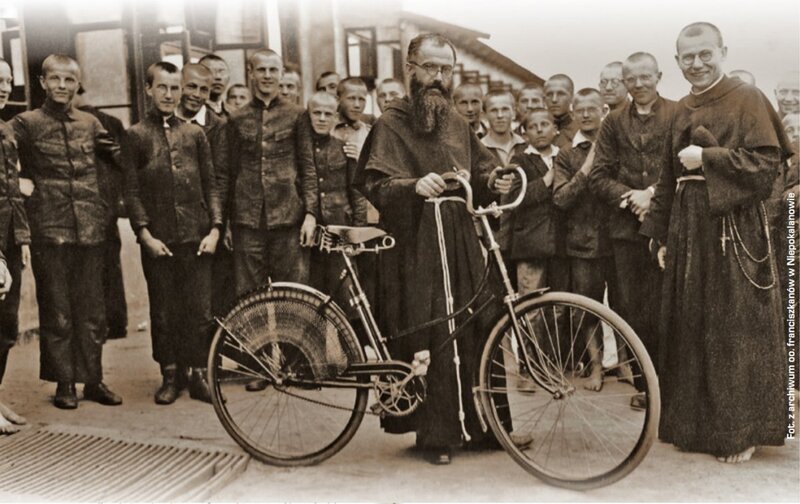Sacrifice of life
In the camp, he was registered as prisoner no. 16670. His name was Maximillian Maria Kolbe.
He had been in the German camp for only two months. Nonetheless, he managed to make his presence known. His fellow inmates, who were lucky enough to survive the war, told many stories about the Franciscan. Priest Konrad Szweda talked about his resilience and the support he gave to the prisoners, but also about his work as a priest, which he went through with despite being told not to do so – he taught, gave confessions, blessed. Kazimierz Piechowski, a famous escapee from Auschwitz, was in the same bloc as father Maximillian. He recalled, that the Franciscan lifted his spirit the first time they met. He encouraged not to lose hope. From the account of many witnesses, e.g. Piechowski, we know what happened at the assembly during which father Kolbe laid down his life as a sacrifice.
The assembly at bloc 14 was gathered after one of the prisoners escaped. The German crew applied collective responsibility, as they usually did after a successful escape. Following a long wait, the prisoners learned, that ten of them were to die of starvation as revenge for the escapee. The officers of the SS, among others the deputy for the camp’s commandant Rudolf Hoess, Karl Fritzsch and Gerhard Palitzsch, began choosing the inmates. One of those to die, a nearly 40 years old soldier, Franciszek Gajowniczek, began begging for mercy. He screamed not to kill him and that he has a wife and children. Then, one of the prisoners stepped out of the line on his own. Silently, but firmly, he proposed to Fritzsch to take him instead of Gajowniczek. This gesture, baffled for a moment even the commandant known for his cruelty. Father Maximillian’s offer was accepted. This scene, shown on many paintings, prints, silver and TV screens; told in memoirs, novels, theatre plays and historical books as an example of a single individual’s heroism in the face of totalitarianism, forever entered the Polish culture.
The prisoners sentenced to death were moved to bloc 11, where the camp’s jail was. In a hunger bunker, despite extreme dehydration, starvation and a lung illness, Kolbe survived for more than two weeks. His fellow inmates wrote in their memoirs, how he sung prayers and book of hours while being there. Father Maximillian died on August 14th 1941, ended off with a phenol injection. His body was cremated on the next day.
First news of his martyr death left the camp thanks to father Ludwik Pius Bartosik, arrested along with the editor of the “Knight of the Immaculata”, currently beatified. He sent a letter to Niepokalanów, in which he wrote: “I was very impressed by the death of father Maximillian”. The camp crew; however, hadn’t sent an official information to his chapter about his death until January 1942. Meanwhile, the story about father Maximillian’s heroic act circled around the prisoners. With some of them, it reached the Dachau camp as well. In 1943, brochures with the martyr’s story and a request for prayers for his beatification appeared in Jerusalem and Padua. His story became more widespread after both Auschwitz and Dachau were liberated. Already in the first, post-war issue of the “Knight of the Immaculata” from July 1945, there was an incomplete information about the circumstances of father Maximillian’s perish. Following this publication, more and more witnesses started to surface, among them the saved Franciszek Gajowniczek. His whole life, he was strongly attached to the monastery in Niepokalanów. When he passed away in 1995, he became one of the two secular people (along with the monastery’s donor, prince Jan Drucki-Lubecki) buried at the local monastic cemetery. Shortly after the war had ended, there were also books written about the life and death of father Kolbe, e.g. by Gustaw Morcinek and Jan Dobraczyński.
